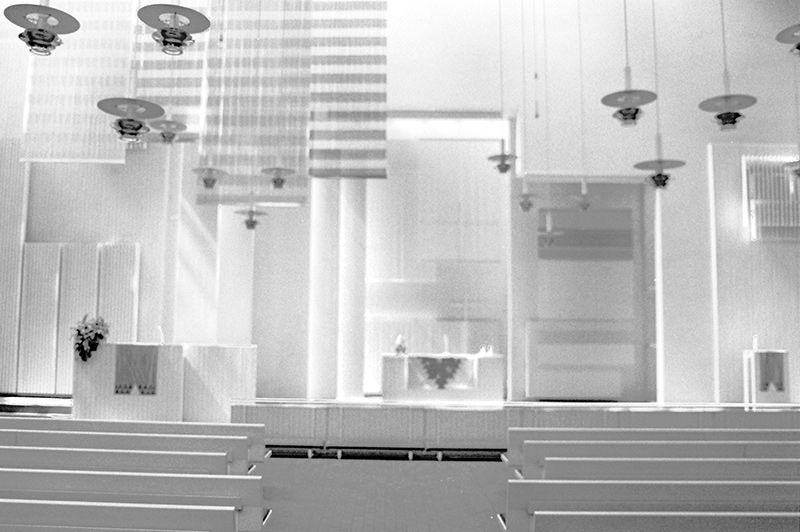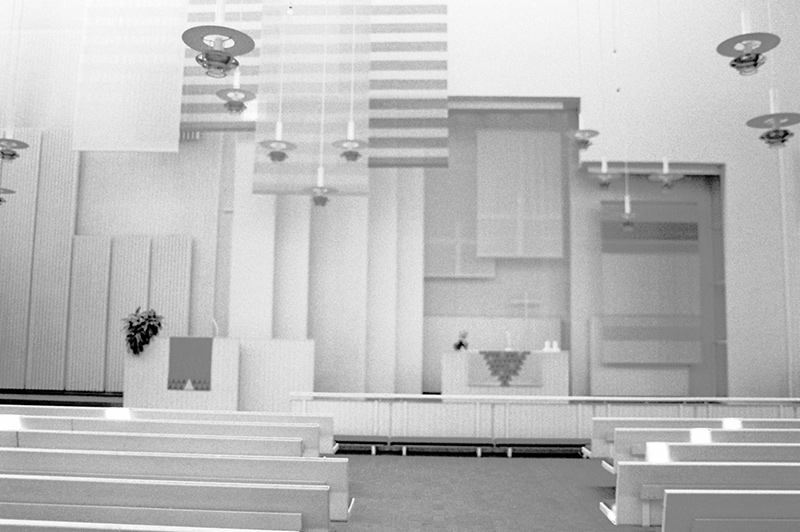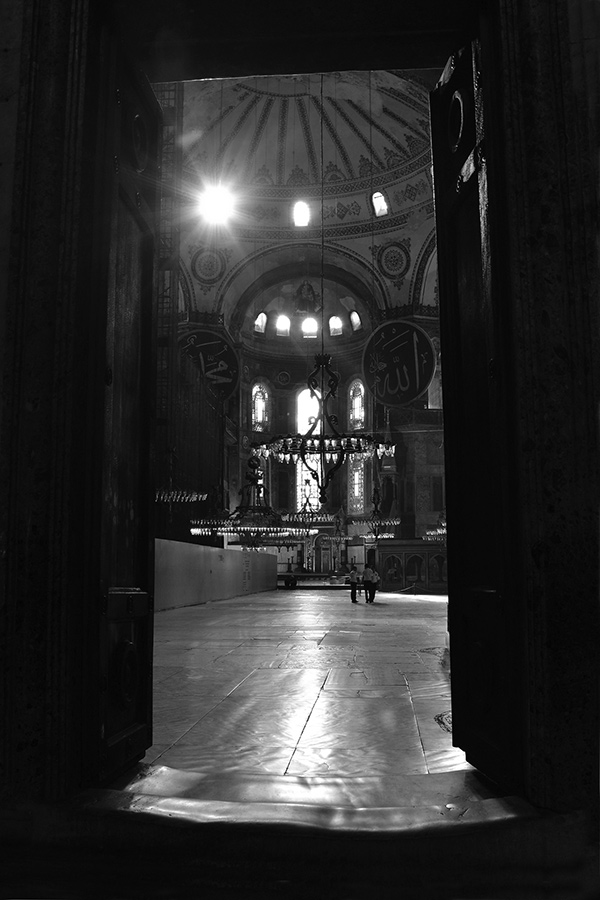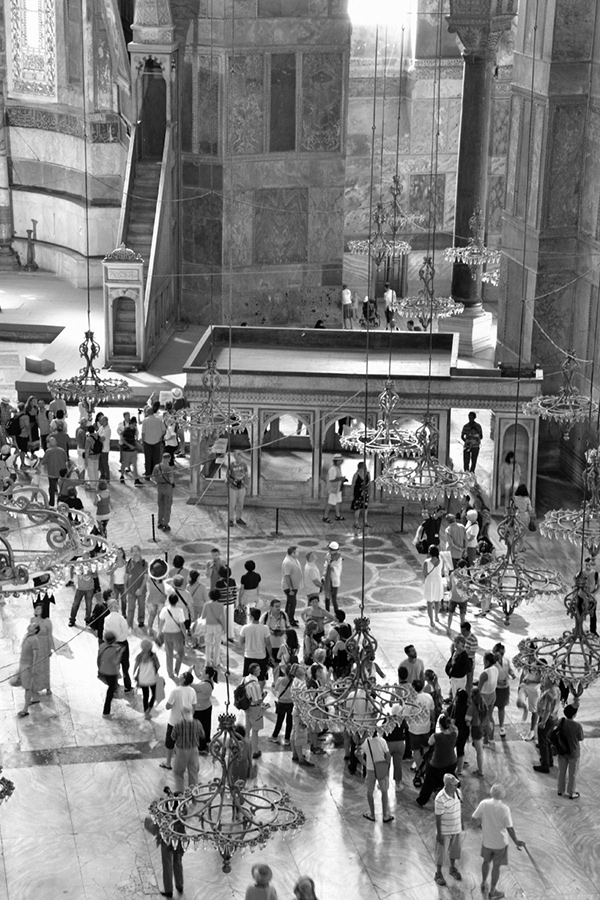Aims and Objectives 2
The work demonstrates that plastic harmony is contingent on light. Sanct Petri kyrka maintains constant integrity through the extreme containment of daylight and sunlight, in conjunction with a constantly lit plane of lamps floating above head height and black internal surfaces. Conversely during spatial discord induced by excessive luminosity, the church of le couvent de la Tourette descends into Mannerist earthliness. Through the conjunction of constrained sunlight and a plane of artificial light floating above head height, the secularized Ayasofya Müzesi sporadically attains plasticity and vestiges of the cosmic and the sacred.
The sculpture is made from colour, light and shadow, mediated by wood, plaster, gesso and oil paint. Its scope is the sensual and the cosmic.
The work has been informed by two seminal teachers of the past half century, Michael H. Chilton’s teaching on the interrelationship of colour and form, and Geoffrey H. Baker’s analysis of form. Spatial incoherence is rarely mentioned, but aspects of the work are anticipated by Le Corbusier(6), Juha Leiviskä(7), Marietta S. Millet(8), Danièlle Pauly(9) and Emerson Howland Swift(10). The context is a malaise at the heart of architectural culture, the systemic denial of the intrinsic visual-spatial realm and the prerequisite foundation skills which inform its understanding, the consequence of which is a licence to propagate environmental pollution.




